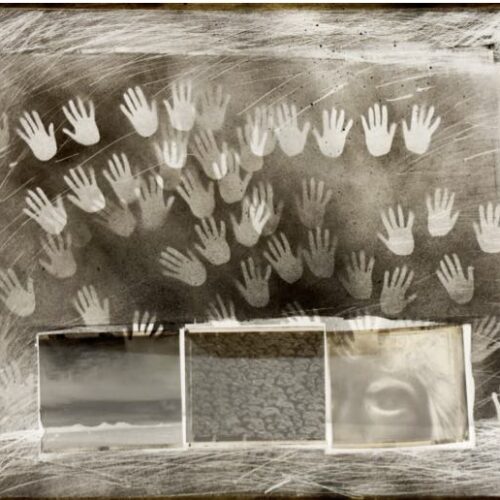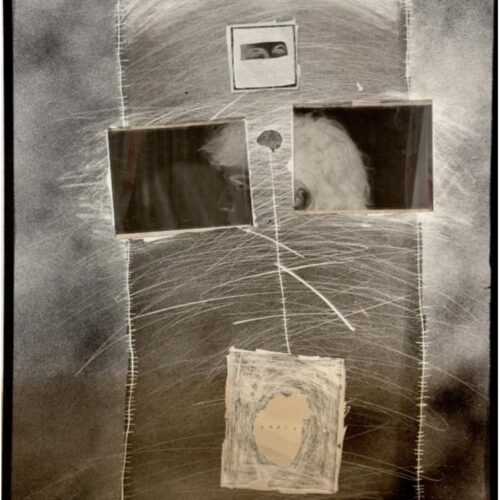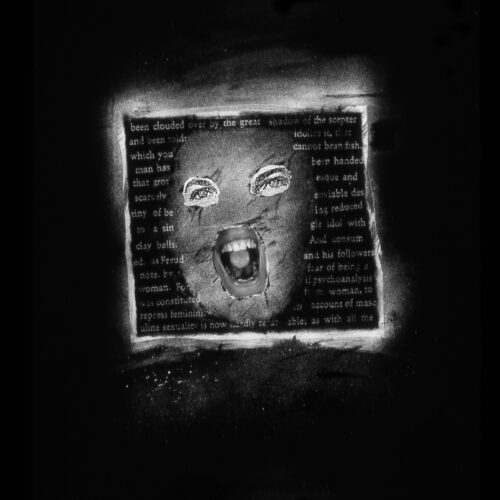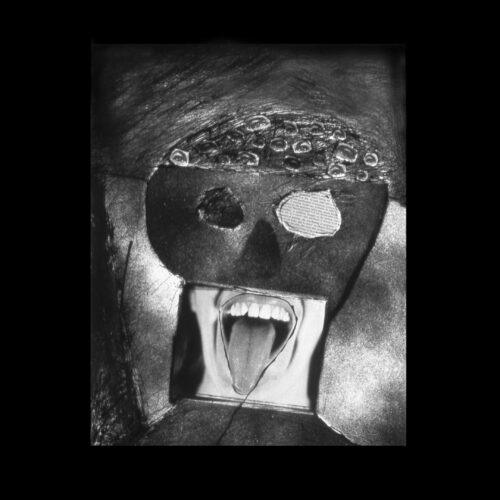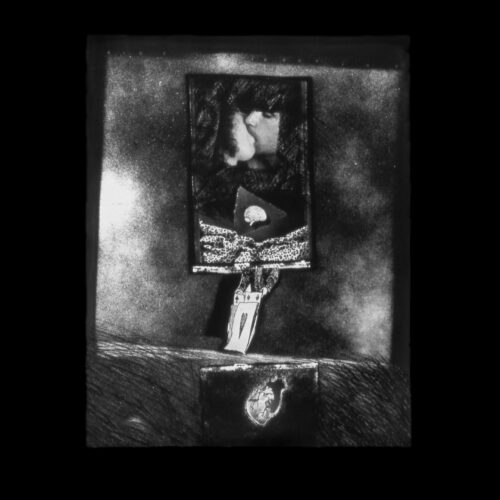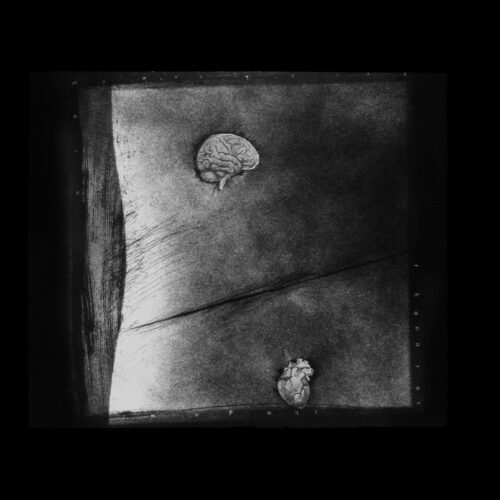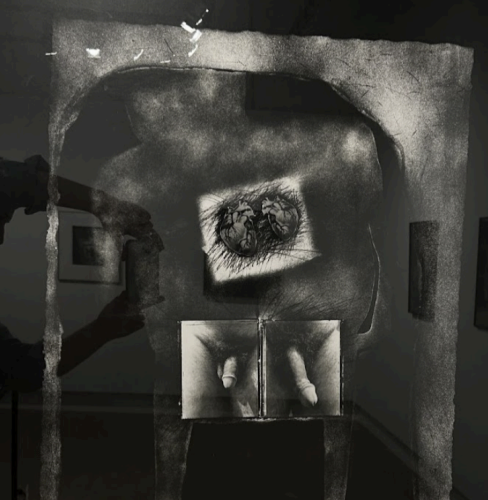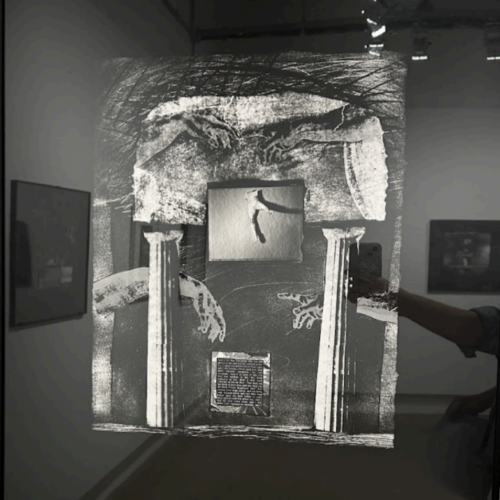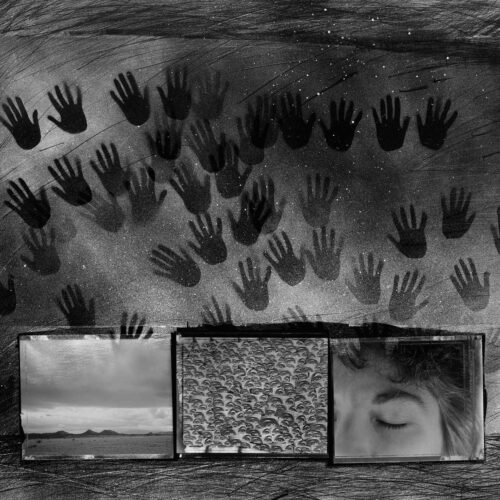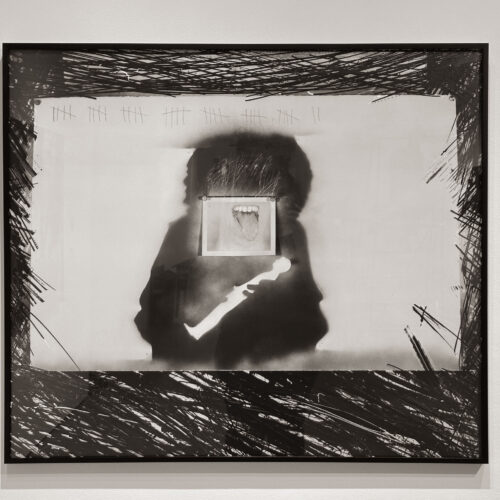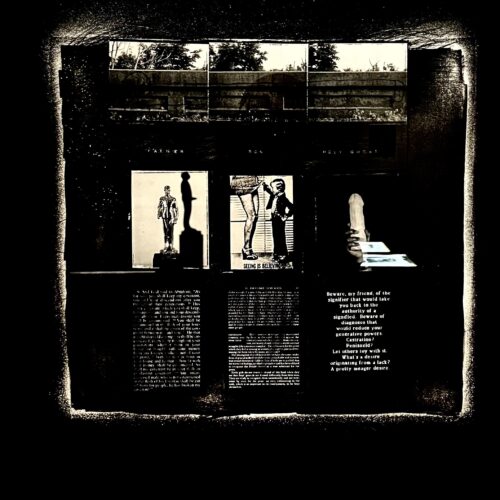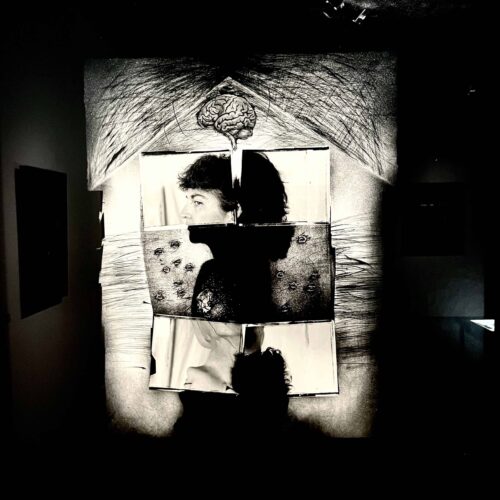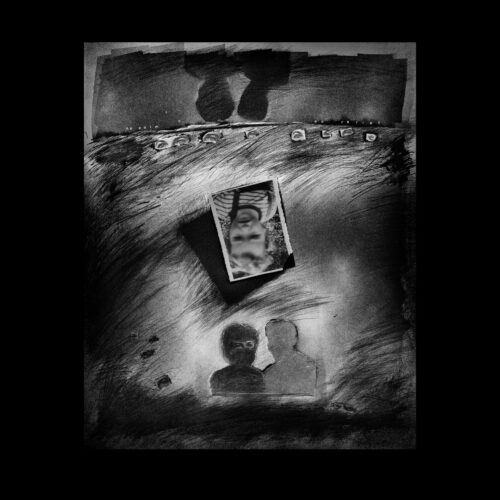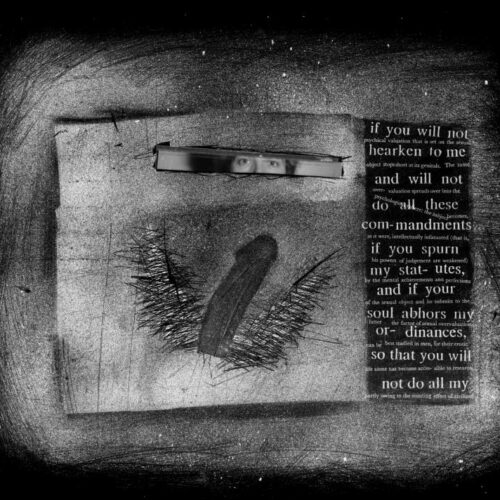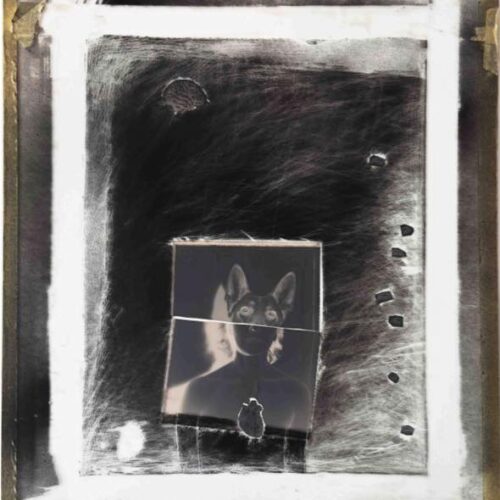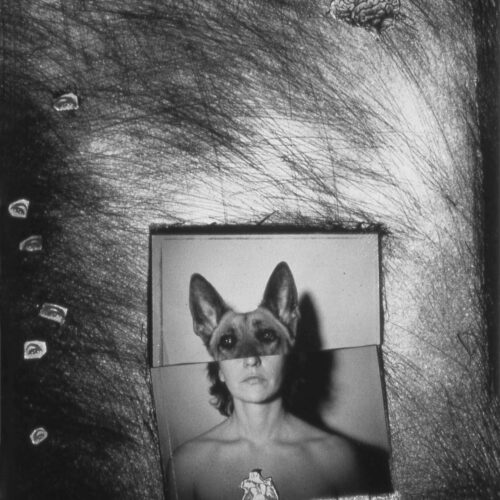Cliché Verre
The “Cliché Verre” or “glass plate” process originated in 19th-century France, the birthplace of photography, as a historically significant technique for both photographic and printmaking forms. The process begins with creating an image on a transparent surface like glass, translucent paper, or transparent film. The prepared surface is then placed or sandwiched onto light-sensitive material and exposed to light. The transparent plate functions as a photographic negative in this process, enabling the artist to transfer the image onto the paper and to potentially produce multiple copies.
Artists can employ various techniques to create these images, including painting, drawing, and mark-making. The method favored in the 19th century involves inking or painting out an entire sheet of glass and then meticulously scratching away areas to reveal the clear glass beneath. This creates a negative that light can pass through that is made by the artist’s hand instead of a mechanical device. Depending on their density, areas that allow light to pass through the negative to the photosensitive paper are rendered black.
Barbara DeGenevieve’s unique treatment incorporated drawings, scratching, and mark-making with cut-up and collaged photographic film negatives. She often deconstructed and recycled elements from one glass plate to create a new one, destroying the original in the process.
She incorporated the cathartic nature of this practice into one of her class assignments to emphasize the importance of the artistic learning journey over the art object. To demonstrate to the class, she shattered one of her own Cliché Verre glass plates with a hammer, then invited her students to destroy a one-of-a-kind object they had worked on throughout the semester. This is why several glass plates have been lost to time.
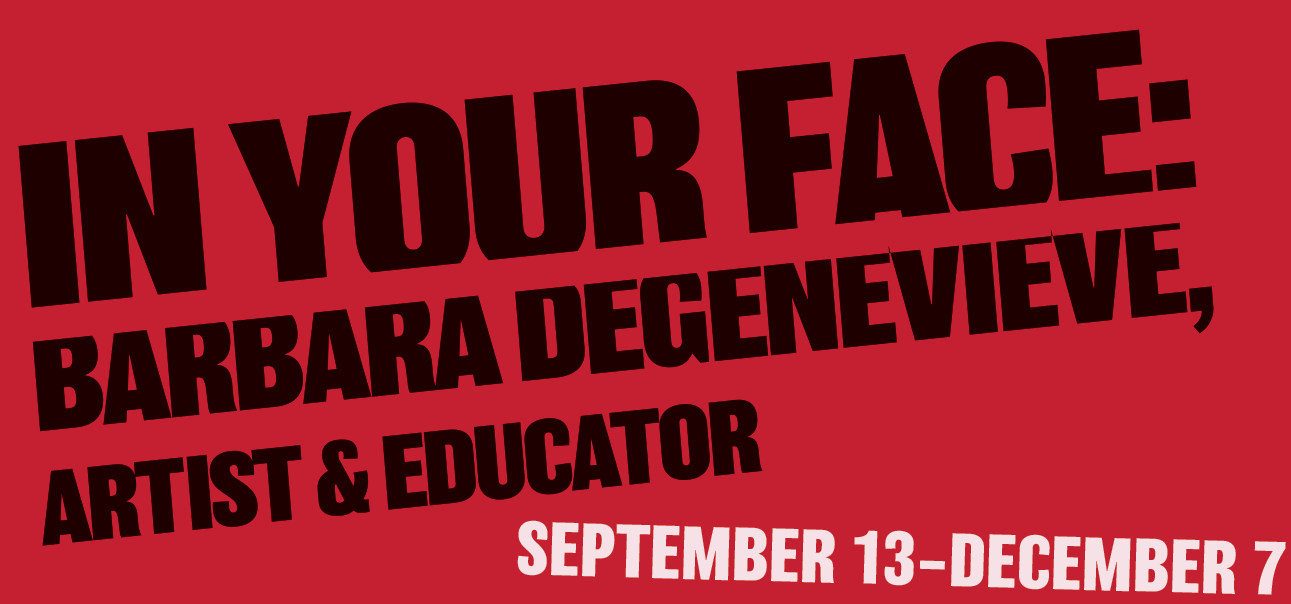
)
